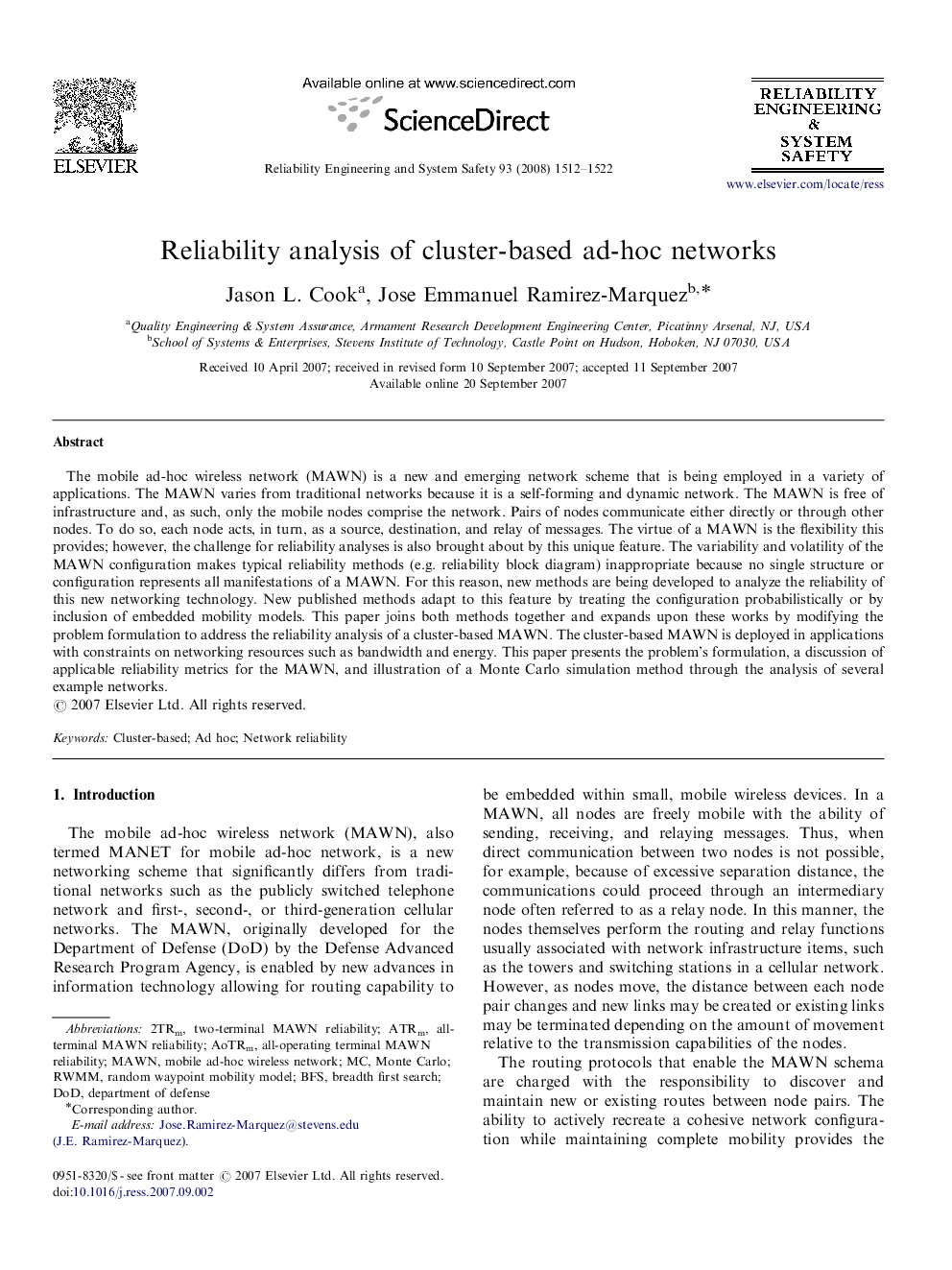| Article ID | Journal | Published Year | Pages | File Type |
|---|---|---|---|---|
| 807036 | Reliability Engineering & System Safety | 2008 | 11 Pages |
The mobile ad-hoc wireless network (MAWN) is a new and emerging network scheme that is being employed in a variety of applications. The MAWN varies from traditional networks because it is a self-forming and dynamic network. The MAWN is free of infrastructure and, as such, only the mobile nodes comprise the network. Pairs of nodes communicate either directly or through other nodes. To do so, each node acts, in turn, as a source, destination, and relay of messages. The virtue of a MAWN is the flexibility this provides; however, the challenge for reliability analyses is also brought about by this unique feature. The variability and volatility of the MAWN configuration makes typical reliability methods (e.g. reliability block diagram) inappropriate because no single structure or configuration represents all manifestations of a MAWN. For this reason, new methods are being developed to analyze the reliability of this new networking technology. New published methods adapt to this feature by treating the configuration probabilistically or by inclusion of embedded mobility models. This paper joins both methods together and expands upon these works by modifying the problem formulation to address the reliability analysis of a cluster-based MAWN. The cluster-based MAWN is deployed in applications with constraints on networking resources such as bandwidth and energy. This paper presents the problem's formulation, a discussion of applicable reliability metrics for the MAWN, and illustration of a Monte Carlo simulation method through the analysis of several example networks.
